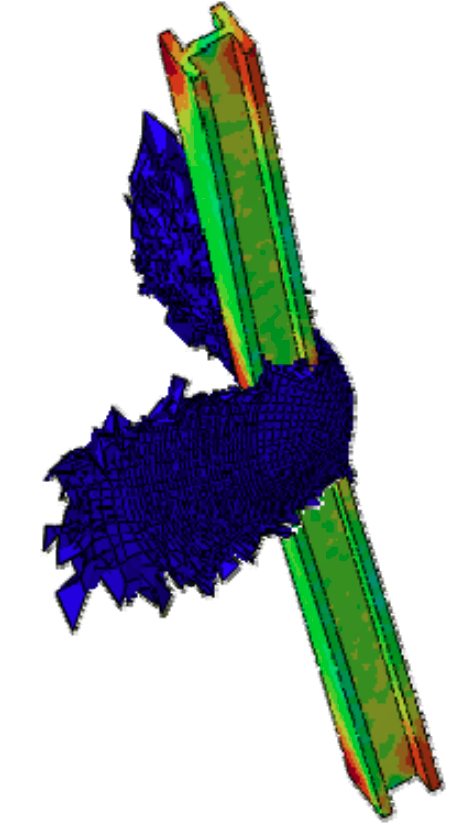-
Client
Undisclosed
-
Business need
To reduce risk during the design of a new aircraft, our clients required the development and application of analytical tools to predict impact damage to composite and metallic structures.
-
Why Frazer-Nash?
Our experienced Chartered Engineers have a full understanding of the failure of composite materials, coupled with many years experience in highly complex analysis. Our work on composite impact has been presented at a number of high profile conferences.
Problem
As part of the tough Aviation Regulatory requirements (imposed by the Civil Aviation Authority), it is necessary to consider specific impact scenarios against the wing. These include bird strike and impacts arising from a tyre or wheel burst. This assessment can be carried out by analysis and/or test.
During the design process, the vulnerability of key parts of the wing structure (fixed and moving leading edge, wing covers) needed to be assessed prior to manufacture and test. As composite materials are used for more varied and numerous applications, particularly in aerospace, the ability to accurately represent composite structures using analytical tools is becoming increasingly important.
Capturing the behaviour of composite structures, especially the complex failure mechanisms, is a significant challenge experienced by many industries. Our clients instructed Frazer-Nash to develop analytical tools and methods to accurately predict the damage created to composite and metallic structures during impact.
Solution
We developed analytical methods using Abaqus Explicit for predicting damage caused during a variety of hard and soft impact scenarios on composite structures. Crucially, these tools are scalable and able to model small and simple structures through to large and complex structures.


